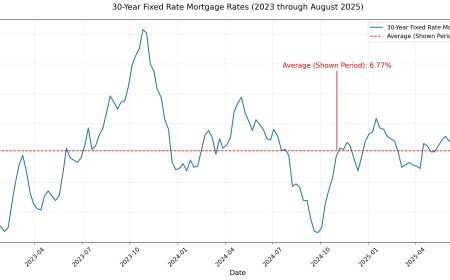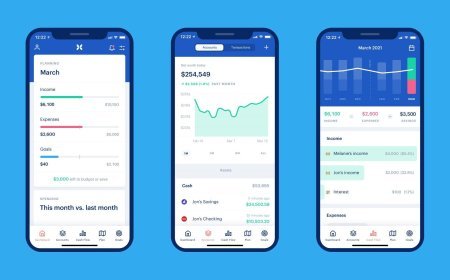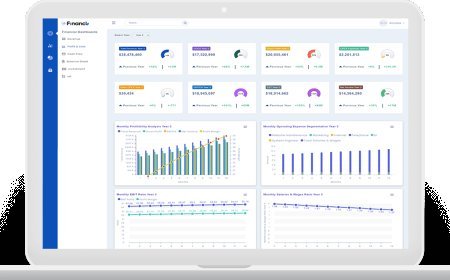Financial Calculators Every Investor Should Use
Discover essential financial calculators for investment planning, retirement calculations, and wealth building to make informed financial decisions.

Financial calculators are powerful tools that help investors make informed decisions by modeling complex scenarios, comparing investment options, and planning for long-term financial goals. Understanding which calculators to use and how to interpret their results can significantly improve your investment strategy and financial planning effectiveness.
Compound interest calculators demonstrate the power of time and consistent investing by showing how money grows when earnings generate their own earnings. These calculators help investors understand why starting early matters and how small differences in return rates compound dramatically over time. Input your initial investment, monthly contributions, interest rate, and time horizon to see projected growth.
Retirement planning calculators help determine how much you need to save for retirement and whether your current savings rate will meet your goals. These tools factor in current age, desired retirement age, expected expenses, Social Security benefits, and existing retirement savings. More sophisticated calculators account for inflation, varying contribution amounts, and different withdrawal strategies.
401(k) contribution calculators optimize employer-sponsored retirement plan contributions by showing the impact of different contribution levels on taxes, employer matches, and long-term wealth accumulation. These calculators help determine optimal contribution amounts to maximize employer matches while managing current tax obligations and cash flow needs.
Asset allocation calculators help investors determine appropriate portfolio mixes based on age, risk tolerance, time horizon, and financial goals. These tools typically recommend percentages for stocks, bonds, and other asset classes while showing how different allocations affect potential returns and volatility. Some calculators include rebalancing scenarios and tax considerations.
Investment return calculators analyze potential returns from different investment scenarios, including one-time investments, regular contributions, and varying return rates. These tools help compare investment options and understand how factors like fees, taxes, and timing affect overall returns. Advanced calculators model different market scenarios and withdrawal strategies.
Mortgage calculators go beyond basic payment calculations to help investors understand the total cost of homeownership, compare loan terms, and evaluate refinancing opportunities. Investment property calculators factor in rental income, expenses, tax benefits, and appreciation to determine potential returns from real estate investments.
Tax-loss harvesting calculators help investors optimize their tax strategies by modeling the impact of realizing losses to offset gains. These tools calculate potential tax savings from different harvesting strategies while considering wash sale rules and the impact on portfolio allocation.
Dollar-cost averaging calculators compare lump-sum investing with systematic investing over time. These tools show how different investment timing strategies affect returns and help investors understand the trade-offs between market timing risks and potential opportunity costs.
Early retirement calculators help investors planning to retire before traditional retirement age by modeling accelerated savings scenarios, withdrawal strategies, and the impact of not having access to traditional retirement accounts. These calculators factor in healthcare costs, bridge strategies, and sequence of returns risks.
Education funding calculators help parents and students plan for college expenses by projecting future costs, evaluating different savings vehicles (529 plans, Coverdell ESAs, taxable accounts), and comparing funding strategies. These tools account for inflation in education costs and different savings timelines.
Debt payoff calculators compare different debt elimination strategies like the debt snowball and debt avalanche methods. These tools show how extra payments, balance transfers, or consolidation affect payoff timelines and total interest costs. Investment opportunity cost calculators help determine whether to pay off debt or invest based on interest rates and expected returns.
Social Security benefit calculators help investors understand how different claiming strategies affect lifetime benefits. These tools model the impact of claiming at different ages, spousal benefits, and survivor benefits to optimize Social Security income in retirement planning.
Required Minimum Distribution (RMD) calculators help retirees understand mandatory withdrawals from tax-deferred retirement accounts. These tools calculate annual RMD amounts based on account balances and life expectancy tables, helping retirees plan for tax obligations and income needs.
Net worth calculators track wealth accumulation over time by totaling assets and subtracting liabilities. These tools help investors monitor progress toward financial goals and understand how different decisions affect overall wealth building. Regular net worth calculations provide valuable feedback on financial strategies.
Fee impact calculators demonstrate how investment fees compound over time and affect long-term wealth accumulation. These tools compare the cost of different investment options, including expense ratios, advisory fees, and transaction costs, showing how small fee differences create large wealth differences over time.
Monte Carlo simulation calculators model thousands of potential market scenarios to evaluate the probability of achieving financial goals under different conditions. These sophisticated tools help investors understand the range of possible outcomes and the impact of different strategies on success rates.
Inflation adjustment calculators help investors understand how inflation affects purchasing power over time and adjust financial planning accordingly. These tools show how much money you'll need in the future to maintain current purchasing power and help set appropriate savings targets.
Tax bracket calculators help investors understand how different income levels and deduction strategies affect their tax obligations. These tools are valuable for tax planning, Roth conversion decisions, and optimizing the timing of income and deductions.
Calculator limitations include assumptions about future returns, inflation rates, and market conditions that may not materialize. Results should be viewed as estimates rather than guarantees, and investors should model multiple scenarios with different assumptions to understand the range of possible outcomes.
Effective calculator usage involves running multiple scenarios with different assumptions, updating calculations regularly as circumstances change, using results as starting points for deeper research rather than final answers, and understanding the limitations and assumptions underlying each calculator's methodology.
Free calculator resources are available through Vanguard, Fidelity, Schwab, government websites like the Social Security Administration, and independent financial education sites. Many of these calculators are as sophisticated as expensive financial planning software, making professional-quality analysis accessible to all investors.
What's Your Reaction?
 Like
0
Like
0
 Dislike
0
Dislike
0
 Love
0
Love
0
 Funny
0
Funny
0
 Angry
0
Angry
0
 Sad
0
Sad
0
 Wow
0
Wow
0







































